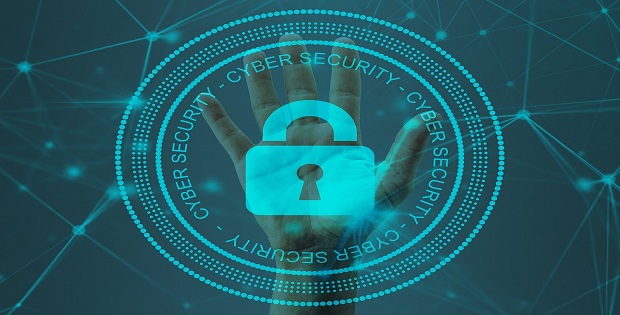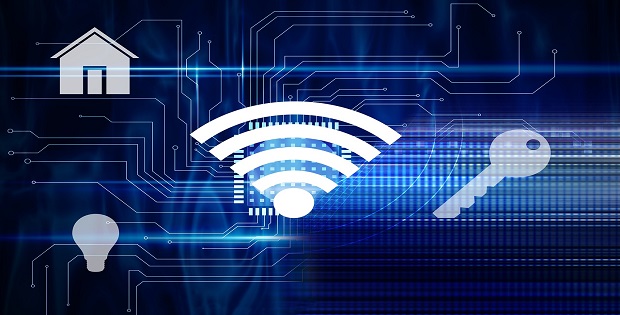Key Elements of Cybersecurity Framework
Last Updated on 5 months by Touhid
Cyber security is the process and preventive action of protecting your computer systems from malicious attacks or unauthorized access. In that case, the elements of cybersecurity are very important for every organization or individual to protect their sensitive information. That’s why in this post, today we will mainly focus on the cybersecurity elements.
Table of Contents
Elements of Cybersecurity
There are six essential key elements of the cybersecurity framework such as application security, information security, network security, disaster recovery plan, operational, and end-user security.
Keep reading the following section, to learn more.
 1. Application Security
1. Application Security
Application security is the first key components of cybersecurity which adds security features within applications during the development period to prevent cyber-attacks. It protects websites and web-based applications from different types of cyber security threats that exploit vulnerabilities in source code.
Application Vulnerabilities
Application threats or vulnerabilities can be SQL injection, Denial of Service attacks (DoS), data encryption, data breaches, or other types of threats.
Categories of Application Threats
The most common categories of application threats related to software or applications are as follows:
- Input validation
- Authorization
- Session management
- Parameter tampering
- Encryption
Application Security Tools
However, there are different types of application security tools such as firewalls, antivirus software, encryption techniques, and web application firewalls (WAF) which can help to protect your application software from cyber-attacks and unauthorized access.
2. Information Security
Information security (IS) or InfoSec is the elements of cyber security that refers to the process and methodology for preventing unauthorized access, use, disclosure, disruption, modification, or destruction of information.
The information can be anything like your personal details, login credentials, network details, or your profile on social media, mobile phone etc.
The main principle of Information Security
There are three main principles of Information Security, commonly known as CIA – Confidentiality, Integrity, and Availability.
 Confidentiality
Confidentiality
Confidentiality is the protection of information that allows authorized users to access sensitive data. It involves any information that is sensitive and should only be shared with a limited number of people.
The following types of information are considered confidential:
- Name, date of birth, age, and address.
- Contact information.
- Bank account details.
- Professional information.
- Email account details.
- Social Media Profile.
- Medial record and
- Family information.
Integrity
Integrity means maintaining the consistency, accuracy, and completeness of information. It involves keeping information from being altered or changed and ensuring that data cannot be altered by unauthorized people.
Availability
Availability ensures that information and resources are accessible to authorized users. If an attacker is not able to compromise the first two principles, then they may try to execute a denial of service (DoS) attack.
This attack would bring down the web server and make the website unavailable to legitimate users due to lack of availability.
3. Network Security
Network security is another element of IT security which process of preventing and protecting against unauthorized access into networks.
It is a set of rules and configurations to prevent and monitor unauthorized access, misuse, and modification of a computer network and resources. It includes both hardware and software technologies.
Network Security Methods
There are many methods to improve network security and the most common network security components are as follows:
- Antivirus Software.
- Email Security.
- Firewall
- Virtual Private Network (VPN).
- Web Security
- Wireless Security.
- Endpoint Security.
- Network Access Control (NAC).
 Network Security Software
Network Security Software
There are varieties of software and hardware tools to protect your computer network. For example, the firewall is a network security tool that keeps track of network traffic and what’s happening on your networks.
- Network firewalls
- Cyber roam firewalls
- Web application firewalls
- Unified threat management
4. Disaster Recovery Planning
A Disaster Recovery Plan (DRP) is a business continuity plan and managed procedures that describe how work can be resumed quickly and effectively after a disaster.
A disaster recovery strategy should start at the business level and determine which applications are most important to running the organization’s activities. In determining a recovery strategy, every organization should consider the following issues such as:
- Financial Budget
- Resources
- Technology
- Administration
- Hardware
When disaster recovery strategies have been developed and approved, then the organization can translate them into disaster recovery plans.
Steps of Disaster Recovery Planning
There are 12 steps to help you prepare a disaster recovery plan which are as follows:
- Define the scope of the organization’s assets.
- Identifying the possible threats and vulnerabilities.
- Ensure Data Protection.
- Create a Disaster Recovery team.
- Provide training to team members.
- Establish team members’ accountability.
- Create a data recovery plan.
- Test your data recovery plan.
- Review regularly.
- Take backup regularly.
- Update and revise your plan and
- Possible to implement cloud backup.
Types of Disaster Recovery Plans
There are about four types of disaster recovery plans, and according to your business nature, you can pick which plan best suits your needs.
- Data Center Disaster Recovery.
- Cloud-Based Disaster Recovery.
- Virtualization Disaster Recovery.
- Disaster Recovery as a Service.
5. Operational Security
Operational security (OPSEC) is an analytical and risk management elements of cybersecurity. OPSEC identifies the organization’s critical information and develops a protection mechanism to ensure the security of sensitive information.
It is also known as procedural security, which encourages managers to view operations in order to protect sensitive information.
Steps of Operational Security
To develop an effective operations security program, the organization’s OPSEC officers first find out and define the possible threats, and then they will take necessary action.
There are five steps to process the operational security program, which are as follows:
- Define the organization’s sensitive information.
- Identify the categories of threats.
- Analyze security holes and vulnerabilities.
- Assessment of Risks.
- Implementation of appropriate countermeasures.
6. End User Education
End-user education is most the important component of computer security. End users are becoming the largest security risk in any organization because it can happen anytime.
However, the end-user does not fault their own, and mostly due to a lack of awareness and business security policies, procedures, and protocols.
End User Threats
There are many reasons, that a threat can be created. The end-user threats can be created according to the following ways:
- Using social media.
- Text Messaging.
- Apps Download.
- Use of Email.
- Password creation and usage.
End User Security Program
It is better to arrange a cyber security awareness training program on a regular basis which should cover the following topics:
- Cyber Security and its importance.
- Different types of Cyber Threats.
- How to use the Internet.
- Email Phishing and Social Engineering attacks.
- Device Security.
- Physical Security.
- Password creation and usage.
Conclusion
Cyber security is the process of preventive measures for protecting computer systems from cyber threats or unauthorized access. So, the elements of cyber security are very important for us to protect our sensitive information from cyber-attacks. Hope the article Elements of Cybersecurity will be helpful for you.
Affiliate Disclosure : Cyberthreatportal is a participant in the Amazon Services LLC Associates Program, an affiliate advertising program designed to provide a means for website owners to earn advertising fees by advertising and linking to amazon.com.




